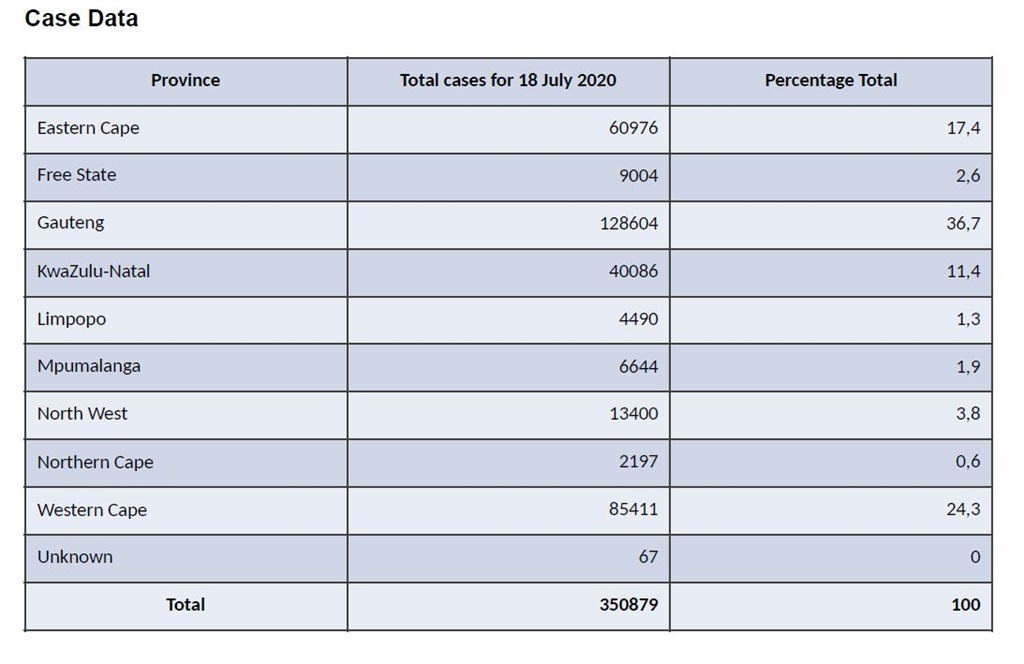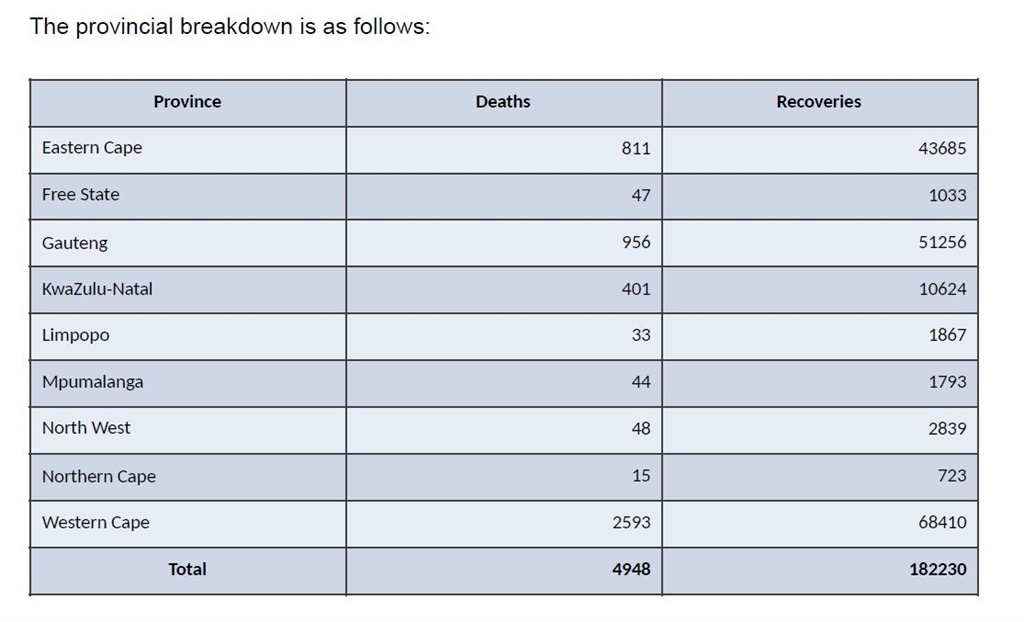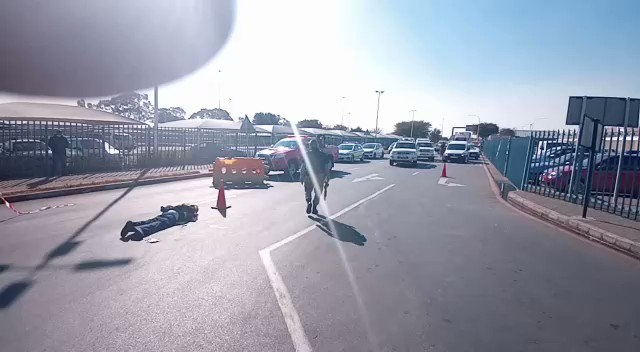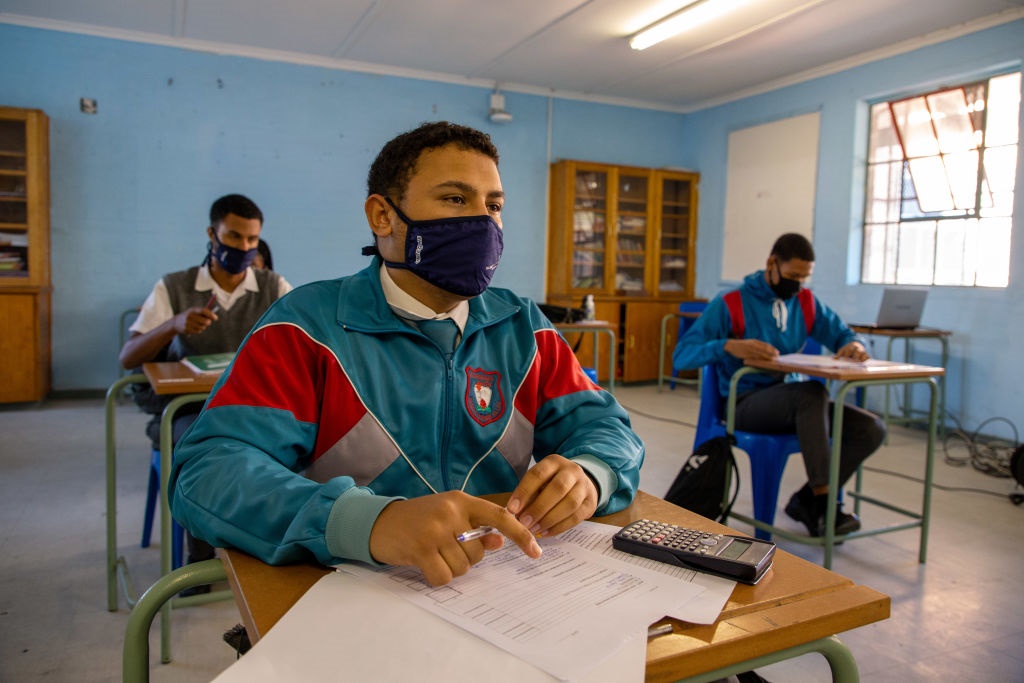- The DA claims there has been an “upsurge” in farm attacks in South Africa.
- Official statistics indicate there has been an increase in farm attacks since the end of the hard lockdown, but it is less compared to 2019.
- However, the long-term effects of farm attacks in communities appear to be lasting.
The DA claims there has been an “upsurge” in the number of farm attacks in South Africa since the start of the national lockdown.
Graphic images of farm owners and workers – who are often stabbed, beaten and abused – are widely and regularly shared on social media when incidents are reported.
Official statistics indicate, since the end of the hard lockdown, farm attacks have been on the rise; however, farm attacks for the first half of 2020 are still lower than the first half of 2019.
Agriculture and safety experts said farm attacks were in the vast majority not racially motivated, and mostly driven by economic gain.
White farmers, however, appear to be more heavily affected, but this may be because they have more wealth in the areas where they live.
The long-term effect of farm attacks and murders also appear to be lasting, with farms attacked taking up to five years to recover, and levels of anxiety increasing in farming communities where they occur.
Additionally, several commentators believed the attacks were more brutal than those committed in urban areas, which could be attributed to the isolated settings in which they occurred.
According to the police’s National Rural Safety Strategy report, farm attacks were defined as any act of violence against any person residing, working on or visiting a farm or smallholding, whether the intent was to murder, rape, rob or inflict bodily harm.
That said, attacks between people living on a farm, such as domestic violence, would not be included in this definition.
This is the most widely used definition in South Africa.
News24 looked at farm murders and attacks in South Africa to try and determine whether they were on the rise, and if they were racially motivated.
Are farm murders and farm attacks on the rise?
Police Minister Bheki Cele told the Portfolio Committee on Police on 10 July crime figures did not show an increase in farm attacks during the national lockdown period.
At the meeting, the police’s divisional commissioner for visible policing, Lieutenant-General Moeketsi Sempe, said they had compared the figures for farm attacks from January to March this year with those from April to June.
From January to March, there were 80 attacks, and from April to June there were 48.
However, Sempe said they were concerned about the slight increase in the murder rate, as the first quarter had six murders, and the second seven.
The police are the only entity in South Africa compiling an official list of farm murders according to the definition previously mentioned.
In comparison, the Transvaal Agricultural Union of South Africa (TAU SA), which has been collecting data from its members as well as media reports on farm murders and attacks since 2008, found there were 26 farm murders and 141 attacks in the first half of this year.
For the first half of 2019, its reports showed there were 194 farm attacks, and 29 murders – more than what had been reported for the first half of 2020.
In the 2018/19 financial year, the police reported 47 farm murders, down from 62 in 2017/18, and 66 in 2016/17. The crime statistics for 2019/20 will only be released around September.
According to the Institute for Security Studies (ISS), farm attacks declined from a high of 1 069 in 2001/02 to 561 in 2017/18, based on figures reported by the police. And farm murders declined from a high of 140 in 2001/02 to 62 in 2017/18.
The ISS’ Dr Johan Burger, who has been researching farm murders since 1997, told News24 while there might be fewer reported farm attacks for the first half of 2020, this figure was likely to rise as the economic fallout of the lockdown occurred.
He attributed the slight decline to farm attacks to the month-long strict lockdown in April, which saw increased police and military visibility, particularly in rural areas.
“This corresponds with a decline of crime across the board as there were fewer people in the streets, and it is therefore riskier for criminals to commit the crime as they would be spotted easier,” Burger said.
Cele said murder and robbery had declined by 63% in the months of April and May compared to the previous year, and cases of reported rape by 82%.
However, Burger said as the economy reopened crime had picked up, and a similar trend was seen for farm murders and attacks.
“[In] the months ahead, with the weakening economy, there are going to be many more people jobless, and there are going to be higher and higher levels of poverty which creates a whole host of social problems.
“As people start looking for food, crime will likely increase across the board – including farm murders and attacks. And the rural areas are soft targets, and there is a belief that farmers are rich which means they might be targeted,” he added.
Are farm attacks more brutal than other crimes?
Agri South Africa’s rural safety chairperson, Tommie Esterhuyse, told News24 the one thing that differentiated farm murders and attacks from other crimes committed in South Africa was the brutality with which they were executed.
TAU SA’s Chris van Zyl said: “The high levels of violence against victims are not [justifiable by] the obvious motives such as robbery and theft of money, weapons and tradable goods like computers and cellphones.”
DA spokesperson for state security Dianne Kohler-Barnard told News24 if the intention was only to steal, the brutality of farm murders did not make sense:
“Why must a farmer, in this case a black farmer, be dragged by their ankles with barbed wire if someone only wanted to steal jewellery? Why must people in some cases be tortured for three days? If someone wanted to steal, they could just tie up the farmer and take the valuables, but instead, horrific abuse occurs.”
Kohler-Barnard said because farmers were isolated from people, attackers have the opportunity to abuse their victims for longer periods of time compared to cities where they would have been at a higher risk of being caught.
She added the electricity and telephone lines of farmers were often cut off before they were attacked, and because there was no cellphone signal, farmers were left to their own devices. Similar issues are not seen with attacks that occur in urban areas.
“Farmers live in areas where it can take up to three hours for police to arrive at the scene; where there is only one police vehicle for an entire region.”
Rudolph Zinn, a professor of policing and forensic investigation at the University of South Africa, told News24 South Africa had a general problem with violence, and this was not isolated to farm murders.
The 2018/19 crime statistics showed robbery with aggravating circumstances, regardless if they took place in cities or in rural areas, increased by 1.2% compared to the previous year, while murder overall increased by 3.4%.
For the same period, farm murders had decreased by 15.
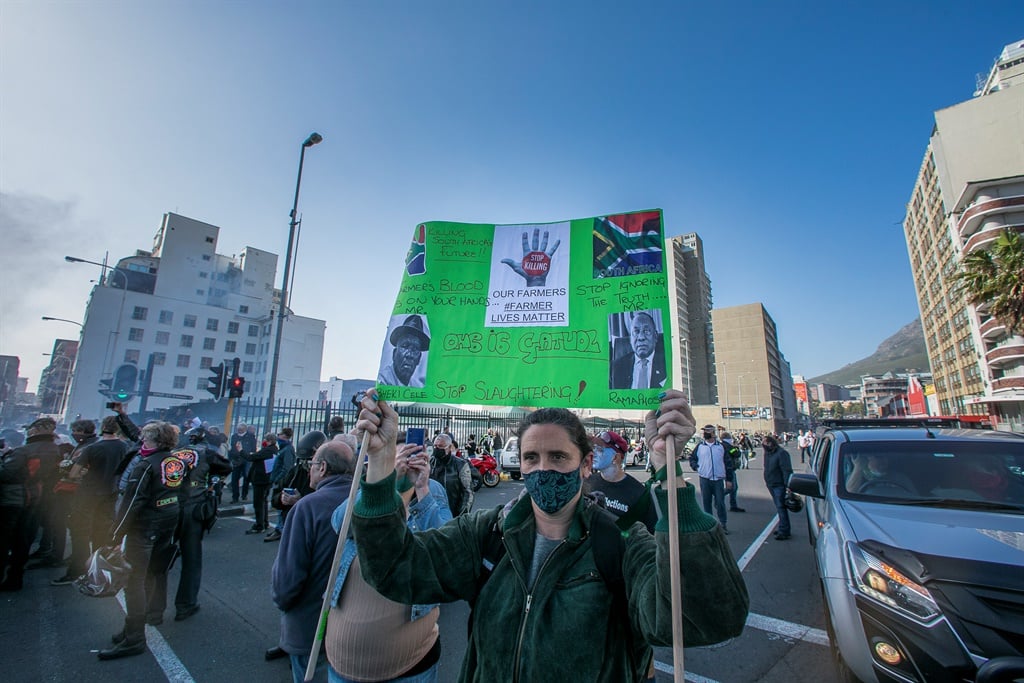
Bikers ride to Parliament to protest against farm killings on Mandela Day. (Photo by Gallo Images/Jacques Stander)
The 2018/19 statistics show, in total, 21 022 murders occurred in South Africa, of which 2 771 were women, 1 014 children, and 47 were people living on farms.
Zinn said in the past five years, there had been a 33% increase in robbery with aggravating circumstances in South Africa.
“South Africa clearly has a problem with violent crime. You can find the same horrific instances of violent crime across the crime categories: You find people being assaulted for vehicles, residential robberies where people are tied up, and people on the street being stabbed more than three times for a few hundred rand, or a cheap cellphone.
“This kind of violence does not only occur on farms, but it is just more widely reported on through lobby groups,” he added.
Civil rights lobby group AfriForum, which has launched a campaign against farm murders to raise awareness about it, said it was not asking for special treatment when it came to farm murders, but rather for equal treatment.
“The South African government has no qualm with developing focused counterstrategies in response to a variety of unique crimes. These include violence against women and children, gang-related violence, copper cable theft, cash-in-transit heists and rhino poaching, to name but a few.”
AfriForum’s Ernst Roets
“It is only in the case of farm murders that we are suddenly confronted with, at worst, a justification of these crimes by Cabinet members, or, at the very best, a downplaying of the existence of the crisis.”
Dr Jane Buys, a safety and risk analyst at Free State Agriculture, said a lot more research was required to determine if farm attacks were more brutal than other crimes.
“The only way to determine this would be to take a sample of victims in urban areas and compare that with a sample of victims in rural areas, with the motives of the perpetrator and the circumstances being the same which would be impossible,” Buys, a former detective, told News24.
Burger said research showed farm inhabitants tended to be assaulted because the perpetrators were looking for PIN codes of bank cards, or for the safe where valuables were stored.
The sooner an individual gave them the information, the less likely they would be assaulted further, he added.
What are the long-term effects of farm attacks?
A 2003 Safety and Security Ministerial Committee inquiry into farm attacks found, aside from the attack itself, those who remained, including other nearby farmers, were left with increased anxiety that another attack would occur, and fear for their safety.
The inquiry’s 487-page report said farmers, who survived attacks, took 18 months on average to have their farms become productive again, placing livelihood stress on the farmer, workers and their families.
In many cases, the farmers chose to abandon their farms because they feared for their safety.
Buys said in the work she had completed, she found farms took closer to five years to recover to levels of production before a farm attack.
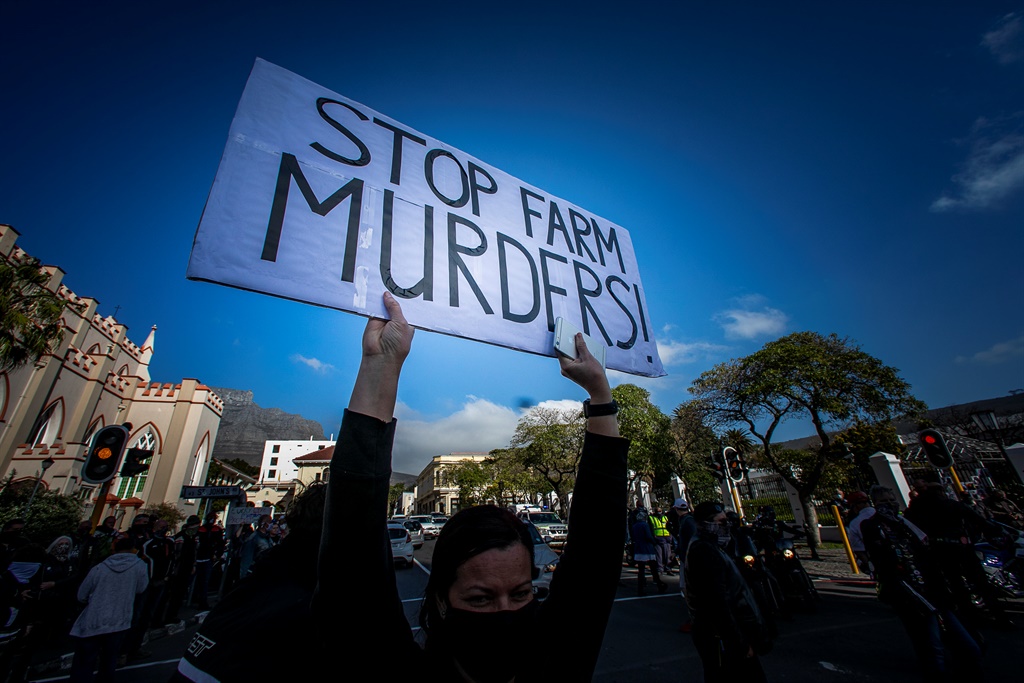
Bikers ride to Parliament to protest against farm killings on Mandela Day. (Photo by Gallo Images/Jacques Stander)
“Aside from the economic impact on those working on farms and communities, we should also be aware of the lasting trauma these attacks leave in communities.
“Farmers, who are attacked, lived with a persistent fear that they will be attacked again, and in many cases leave their farms, or move to security complexes in towns, driving to their farms during the day to work.”
She added compared to urban areas where people, who were attacked, have large support networks to recover after an attack, farmers often lived far from friends and family.
Buys said this was why farmers, who were often attacked, chose to live in towns where there were more people and drive to their farms during the day.
She added compared to urban areas where security services and the police were most likely to be first on the scene, with farm attacks particularly, it was often other farmers who were first on the scene and they lived with that trauma for years.
“In communities where a farm attack occurs, almost immediately the rest of the farmers in the community request additional safety training, self-defence training, and rural security strategies. They almost immediately start living with that fear of an attack.”
Dr Jane Buys
Buys said in many cases, children of parents who were attacked preferred not to hear about the details of an attack because it was so gruesome, and distanced themselves completely from those communities.
Kohler-Barnard said in communities where farm attacks occur, communities grew scared which led to bitterness as they felt the authorities have failed them.
“If your best friend gets murdered and brutally attacked, and you arrive first at the scene and police do nothing to improve the situation, you grow hopeless.
“Every year, the police have a plan on how to address farm murders, but nothing is ever done. It never moves from paper into action.”
Burger said as other farmers grew scared of farm attacks and murders, it deterred other young farmers from entering the industry, adding farm attacks created the impression farming was a risky career.
He attributed this to a decline in the number of commercial farmers from 120 000 in 1994 to around 35 000 today.
Are farm murders and attacks racially motivated?
Zinn, who conducted more than 100 in-depth interviews with convicted felons since 2003, said his research revealed murders were in majority not driven by race when committing a crime.
He added, on average, the felons he had spoken to would commit 103 crimes before they were taken into custody.
“In all cases, they are driven by the motive to get money or find possessions that they can sell in return. They make calculated decisions on who to rob based on the information they have available, and the less the risk is the more likely they will rob those individuals,” Zinn said.
This might be one of the reasons why most farm murders occurred among people who were aged between 60 and 69, according to police crime statistics.
Zinn said one thing the data showed was farms and smallholdings close to the urban areas of Gauteng were more at risk of farm attacks.
“Where there are more people, there is more crime, but there is simply no evidence to show that the attacks are racially motivated.”
Esterhuyse said most instances of farm murders and attacks were around the robbery of computer equipment, cash and weapons.
“I believe farmers are targeted more because they are soft targets as they are isolated from many people.”
He, however, added a large majority of attacks occurred on farmworkers who were looking after cattle that criminals wanted to steal. Attacks have also been reported on emerging black commercial farmers.
“We also definitely see an increase in attacks at the borders with our neighbouring country. For example, there are a lot of attacks on the Lesotho border in the Free State.”
Kohler-Barnard said from her research and tours of areas, it was revealed in certain regions such as Limpopo more than 90% of the farm attacks were carried out by foreign nationals.
Interestingly, she added, compared to urban regions where thieves would steal cars and all the electronics, during farm attacks, only valuables that were easily carried such as jewellery, money and guns were taken.
“However, we need more research on the issue. The last time there was a ministerial committee to investigate the matter was in 2003, which found that largely farm murders were not racially motivated; however, things have changed since then. We live in a different country from then,” Kohler Barnard said.
TAU SA’s Chris van Zyl said its data showed white farmers, their families and friends made up two-thirds of murder victims.
“The particularly high levels of violence and torture indicate a high level of racial hatred, which deeply concerns us.”
Burger said he did believe white people were targeted in farm attacks or murders, but they were more at risk because they have more “economic might” than other racial groups in the areas.
Why it is nearly impossible to calculate the farm murder rate?
He added his research showed farm owners were twice as likely to be attacked than a typical South African, saying it was incredibly difficult to calculate an exact figure because it was unknown how many people actually lived on farms.
Fact-checking publication Africa Check’s Kate Wilkinson said it was nearly impossible to calculate the murder rate for farmers, let alone white farm owners, because to calculate it “you would require the number of people who were murdered in farm attacks and the number of people who worked on, lived on or visited farms and smallholdings”.
“The current farm murder rate is not isolated to farmers, but includes anyone residing on, working on or visiting farms and smallholdings,” Wilkinson added.
Kohler-Barnard said to create an accurate number of the farm murder rate, “you need figures of both permanent and seasonal workers that vary every year depending on the size of the harvest”.
Farm murder rates typically make use of Statistics SA’s 2007 census data which indicates there are 32 375 commercial farmers, but this figure excludes existence and other non-taxpaying farmers, and those simply living on farms.
Statistics SA estimates the number involved in agriculture is around 11 million. But this figure does not include people who work on a farm, but live elsewhere or those visiting farms.








